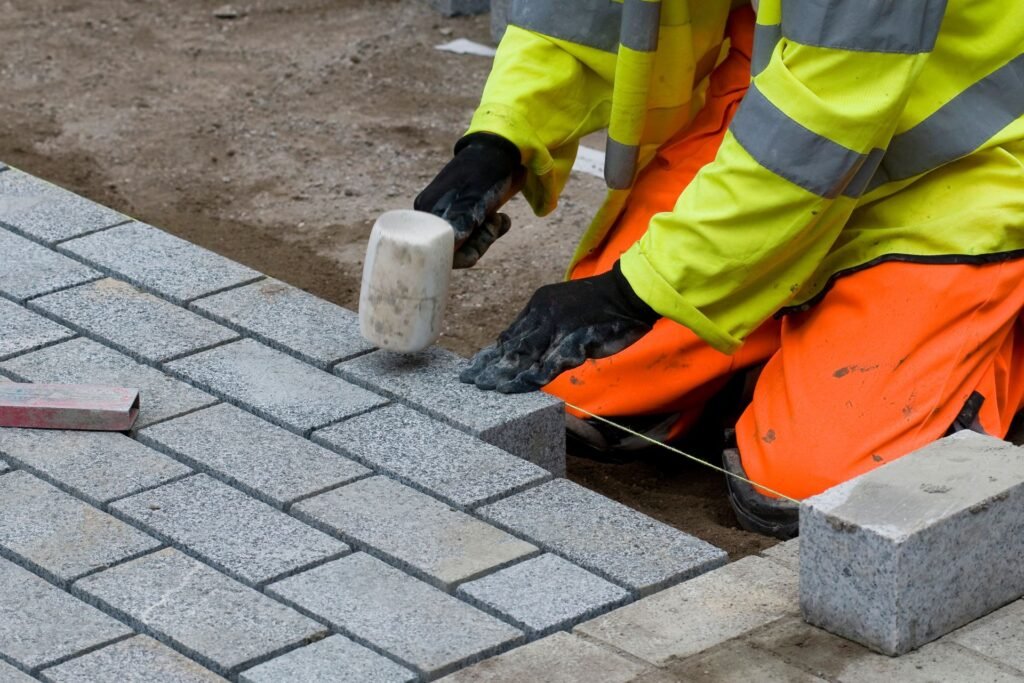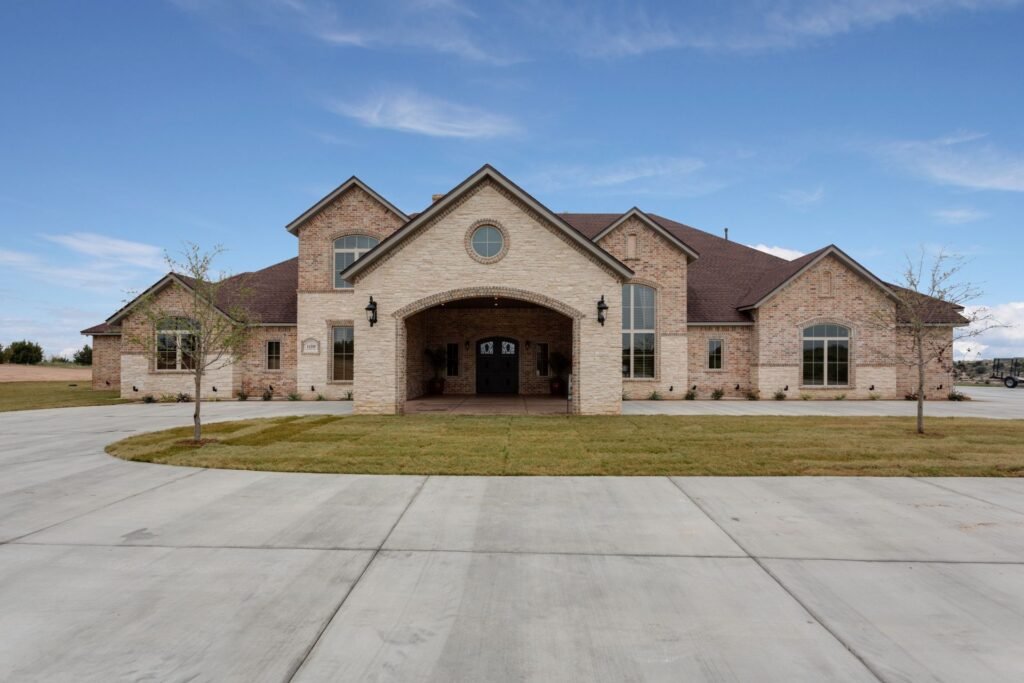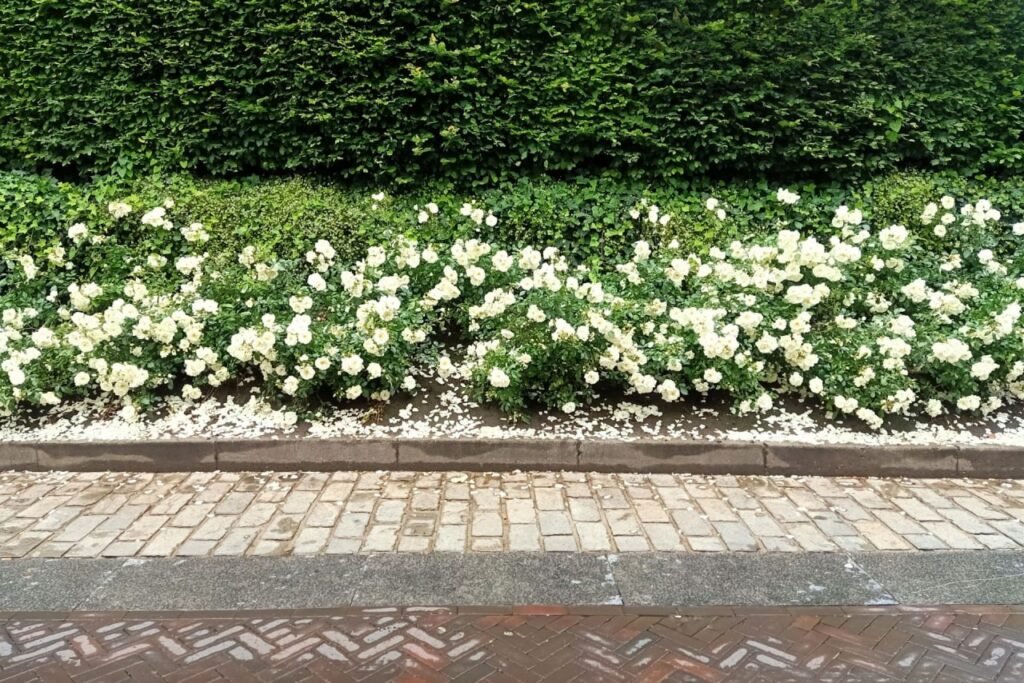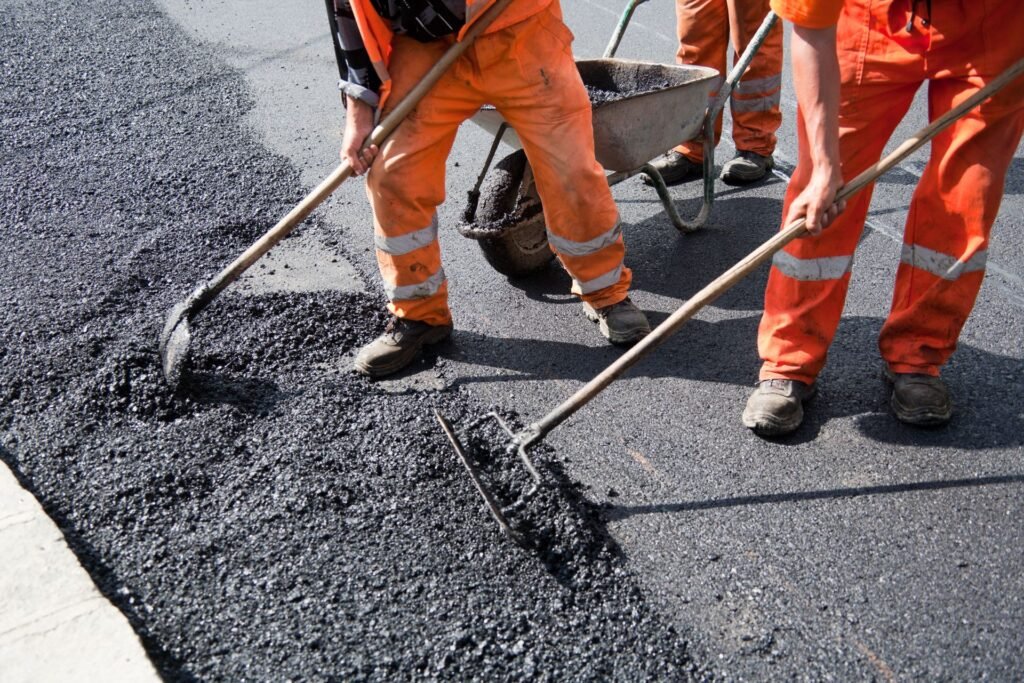
With over years of experience in the concrete industry, specialising in both residential and commercial projects, I’ve tackled everything from concrete slabs and patios to driveways and pathways.
Among our most requested services are exposed aggregate driveways, known for their unparalleled durability and slip-resistant properties. Here’s an in-depth look at how we pour an exposed aggregate driveway, including the meticulous process of creating exposed aggregate concrete.
Understanding Exposed Aggregate Concrete
What is Exposed Aggregate Concrete?
- Exposed aggregate concrete is a decorative style of concrete where the top layer is removed to reveal the underlying stones, pebbles, or shells. This technique not only enhances the visual appeal but also improves the surface’s grip, making it ideal for driveways, pathways, and patios.
Creating the Mix:
- The process begins with selecting the right type of aggregates. We choose from a variety of stones, pebbles, and other materials that best suit the desired aesthetic and functional requirements.
- These aggregates are then mixed with high-quality cement and water to form a robust concrete mix. The proportions are carefully measured to ensure a consistent and durable mixture.

Step-by-Step Guide to Pouring an Exposed Aggregate Driveway
1. Surveying the Land
Initial Assessment:
- Check for Utilities: Before starting your exposed aggregate driveway, assess the area for any underlying utilities like pipes or cables. This step is crucial to avoid any disruptions or damage. If utilities are present, we seek the necessary permissions from the local council, considering the depth and feasibility of the project.
- Existing Driveway: If there’s an existing driveway, it needs to be excavated first. This process can add an extra day to the timeline, depending on the driveway’s size and condition.
Marking the Area:
- Once the assessment is complete, we mark the area for the driveway with stakes and string to outline the exact boundaries of the new exposed aggregate driveway. This precision ensures that the physical work proceeds smoothly.
2. Excavation
Breaking Ground:
- Excavation is often required to prepare the ground for the new driveway. We use a small excavator to remove the topsoil and any existing materials. If we’re replacing an old driveway, the old concrete can sometimes be recycled into the new mix, promoting sustainability.
3. Laying Down the Wooden Formwork
Formwork Setup:
- After excavation, we lay sturdy wooden boards around the marked area to contain the concrete. These boards are essential to maintain the driveway’s shape and prevent the concrete from spreading beyond the designated zone. Properly secured formwork is critical to achieving a clean, precise finish.
4. Placing the Steel Reinforcement Framework
Reinforcement Options:
- Mesh Wire: Typically used for residential driveways, mesh wire offers adequate support for everyday use.
- Rebar: For an exposed aggregate driveway expecting heavier traffic or supporting larger vehicles, rebar provides superior strength and durability, despite being more costly.
Choosing the Best Option:
- Each project is unique, and our exposed aggregate driveway specialists guide you in selecting the most suitable reinforcement based on your driveway’s specific needs. While reinforcement helps prevent cracking, it’s important to note that some minor cracking over time is inevitable.
5. Mixing and Pouring the Concrete
Creating the Mix:
- The exposed aggregate mix is prepared by combining selected aggregates with the concrete. The mix must be homogeneous to ensure even distribution of aggregates throughout the driveway.
Pouring the Concrete:
Depending on the site layout, we either pour the concrete directly from the mixer or transport it using wheelbarrows. The concrete is spread evenly across the area while still wet. Our team uses knee pads and specialised tools to smooth the surface and ensure a consistent finish.
6. Exposing the Aggregates
Surface Exposure:
- After allowing the concrete to set for 24 hours, we expose the aggregates using a high-pressure hose. This process removes the top layer of cement paste, revealing the embedded stones and pebbles and creating the distinctive look of exposed aggregate concrete.
7. Cutting Control Joints
Control Joints:
- Approximately 18 hours after exposing the aggregates, we cut control joints into the concrete. These cuts are essential for controlling random cracking and are typically about a quarter of the depth of the concrete. The number and placement of joints depend on the driveway’s size and layout.
8. Sealing the Exposed Aggregate Driveway
Applying the Sealant:
- Sealing is the final and crucial step. It protects the driveway from the elements, stains, and spills. We apply the sealant 24 hours after cutting the control joints and recommend waiting at least 48 hours before using the driveway. Our team will provide specific advice on drying times and maintenance to ensure longevity.

5 Reasons to Choose Our Business
- Experience: With over 20 years in the concrete industry, we bring unparalleled expertise to every project.
- Quality Materials: We use only the highest quality materials to ensure durability and aesthetic appeal.
- Custom Solutions: We tailor our services to meet your unique needs, offering personalised solutions for each project.
- Sustainability: We prioritise eco-friendly practices, including recycling old concrete and using sustainable materials.
- Customer Satisfaction: Our commitment to excellence ensures that we meet and exceed your expectations on every job.
For more details or to request a free quote, please contact us today. Let us help you create a stunning and durable exposed aggregate driveway that enhances the beauty and functionality of your property.
FAQs
Exposed aggregate concrete is a type of decorative concrete where the top layer is removed to reveal embedded stones, pebbles, or shells, providing a unique and slip-resistant finish.
The process typically takes about 3-5 days, depending on the size and complexity of the project, including surveying, excavation, pouring, and sealing.
Steel reinforcement, such as mesh wire or rebar, strengthens the concrete and helps prevent cracking, ensuring a longer-lasting driveway.
Yes, you can choose from a variety of aggregates to create a unique look that complements your home’s exterior.
After the concrete sets for 24 hours, we use a high-pressure hose to wash away the top layer of cement paste, revealing the aggregates beneath.
Control joints are cut into the concrete to control cracking by allowing the concrete to expand and contract with temperature changes.
We recommend waiting at least 48 hours after sealing before driving or parking on the driveway to allow the sealant to properly set.
Yes, exposed aggregate concrete is highly durable and can withstand various weather conditions and heavy traffic.
Regular cleaning and resealing every few years will help maintain the driveway’s appearance and durability.
Our extensive experience, high quality materials, custom solutions, commitment to sustainability, and focus on customer satisfaction make us the ideal choice for your concrete needs.











